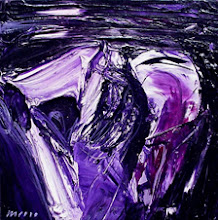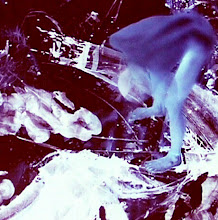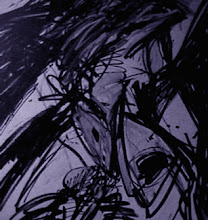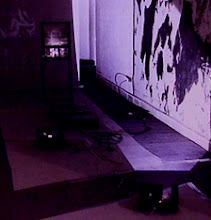Mission
The Blanton Museum of Art at The University of Texas at Austin enriches and transforms the lives of learners of all ages by providing inspiring and relevant experiences with original works of art.
Through the collecting of art, preserving it in optimal condition, and creatively displaying and interpreting these objects, The Blanton serves as an intellectual and social portal connecting the university and the rest of the world through visual art and culture.
History and Background
The art museum of The University of Texas at Austin was born of a generous gift from an unexpected source. In 1927 Archer M. Huntington, a New Yorker and the son of railroad magnate Collis P. Huntington, donated four thousand acres of land in Galveston, Texas, to the university with instructions that it "be dedicated to the support of an art museum." His interest seems to have stemmed from the fact that his wife, Anna Hyatt Huntington, was a noted sculptor; indeed two of her works had recently been given to the university. The proceeds from the eventual sale of that land created an endowment for museum operations and provided a portion of the cost for the construction in 1963 of a new building for the art department of the university, including some gallery space that was formally named the University Art Museum.
A number of important collecting areas quickly took shape during the 1960s and 1970s. One well-known acquisition began with the gift in 1968, continuing into the early 1990s, of approximately four hundred twentieth-century American paintings from novelist James Michener and his wife, Mari, for whom the Blanton's new gallery building is named. The Micheners' interest in collecting the art of their time and in supporting the work of emerging artists continues to be an important guiding principle for ongoing development of our contemporary collections.
The museum's distinctive collection of Latin American art was greatly enriched, beginning in 1971, with the donation of some two hundred paintings and 1,200 drawings from the collection of John and Barbara Duncan. The Blanton's early leadership in this field, which is only now being accorded the importance it deserves by the museum world at large, is owing to the Duncans' visionary gift.
Other notable early gifts included the C. R. Smith Collection of Paintings of the American West, given over a period of years between 1965 and 1985, and a donation in 1968 by Charles Clark of McAllen, Texas, of nearly one thousand contemporary prints.
By 1972 the museum was bursting at the seams. Greatly expanded by the generous Michener gift, the permanent collection moved to gallery spaces in the Harry Ransom Humanities Research Center, while the Print Study Room and galleries for temporary exhibitions remained in the Art Building.
In 1980 the University Art Museum was renamed the Archer M. Huntington Gallery, and a decade of growth followed, including the acquisition of a number of fine antiquities and a small number of Old Master works and contemporary American paintings. This period also saw rapid growth in the prints and drawings collection at the Blanton. Now widely recognized for its breadth and depth, that collection is considered one of the finest in the nation.
With continuing growth came the vision of an expanded home for the Huntington. In late 1994 a bequest of $5 million by Mari Michener for the construction of a new museum building lent momentum to a building campaign. When Houston Endowment Inc. stepped forward in 1997 with a $12 million building gift in honor of its former chairman, the Huntington became the Jack S. Blanton Museum of Art.
The growth and character of the collections took a dramatic turn in 1998 with the important acquisition of the Suida-Manning Collection, which was made possible through the generosity of numerous individuals. Assembled by two generations of art historians, the collection is one of the nation's preeminent collections of Renaissance and Baroque art. It features 230 paintings and four hundred drawings by many significant painters and draftsmen. Almost overnight, the Blanton's Old Master holdings multiplied from around thirty works to one of the finest such collections in the nation.
The American and Latin American collections have similarly been expanding at a rapid pace. Today the Blanton's collection of modern and contemporary American art is a significant resource of more than four thousand paintings, prints, drawings, sculptures, and works in new media from the mid-19th century to the present.
The Latin American collection of modern and contemporary art now contains more than 1,800 modern and contemporary paintings, prints, drawings, and sculptures, reflecting the great diversity of Latin American art and culture. More than 600 artists from Mexico, South and Central America, and the Caribbean are represented in the collection.
All told, the Blanton collection today numbers more than 17,000 works. Noted art historian and critic Leo Steinberg donated his impressive, encyclopedic collection of 3,200 prints in 2002, at once acknowledging and enhancing the distinguished reputation of the Blanton's prints and drawings. We take enormous pride in the great depth we have achieved by concentrating our collecting efforts on works from specific periods, movements, and artists. This approach to acquiring works creates significant opportunities for teaching, in-depth scholarship, and educational programs.
The long-held vision of a new museum building became a reality with the groundbreaking for a new facility in October 2003. The new complex, designed by Kallmann McKinnell & Wood Architects, is comprised of the Mari and James A. Michener Gallery Building, a 124,000-square-foot space that houses the permanent collection and temporary exhibitions; the 56,000-square-foot Edgar A. Smith Building features a café, museum shop, classrooms, auditorium, and offices; and a 145,000-square-foot public plaza and garden designed by Peter Walker and Partners.
As the only art museum in Austin with a permanent collection of substantial range and depth, the Blanton has embraced a mission of serving as a "cultural gateway" between the university and the community. In its new home, with its rich and versatile collections, magnificent galleries, fun and diverse programming, and an enthusiastic and committed group of staff and volunteers, the museum will at last be able to live this mission fully.
Monira Al Qadiri: First Sun / Public Art Fund, New York
-
Monira Al Qadiri’s First Sun is a painted aluminum sculpture depicting a
hybrid human-scarab figure, reimagining the ancient Egyptian deity ...
11 hours ago































